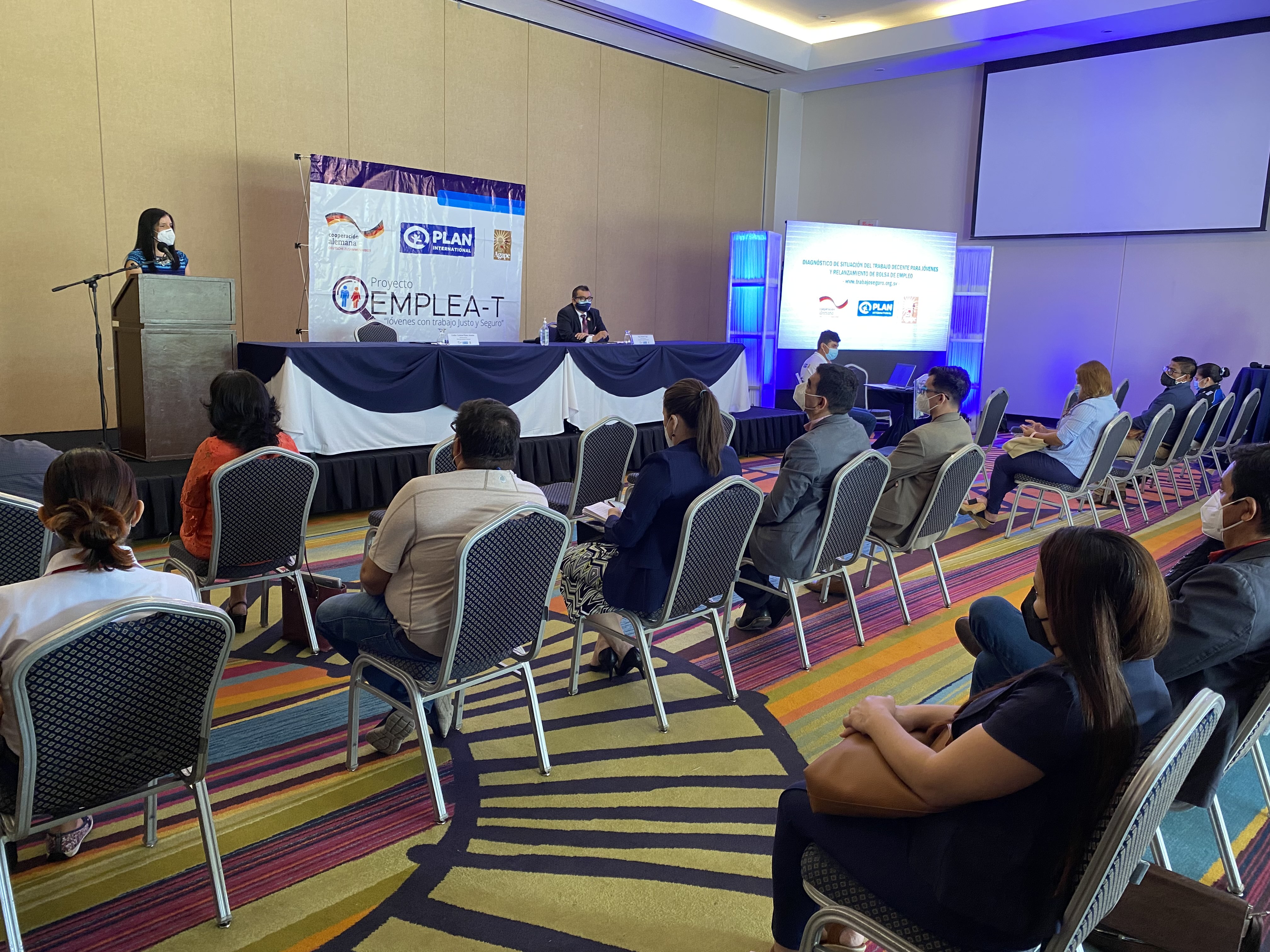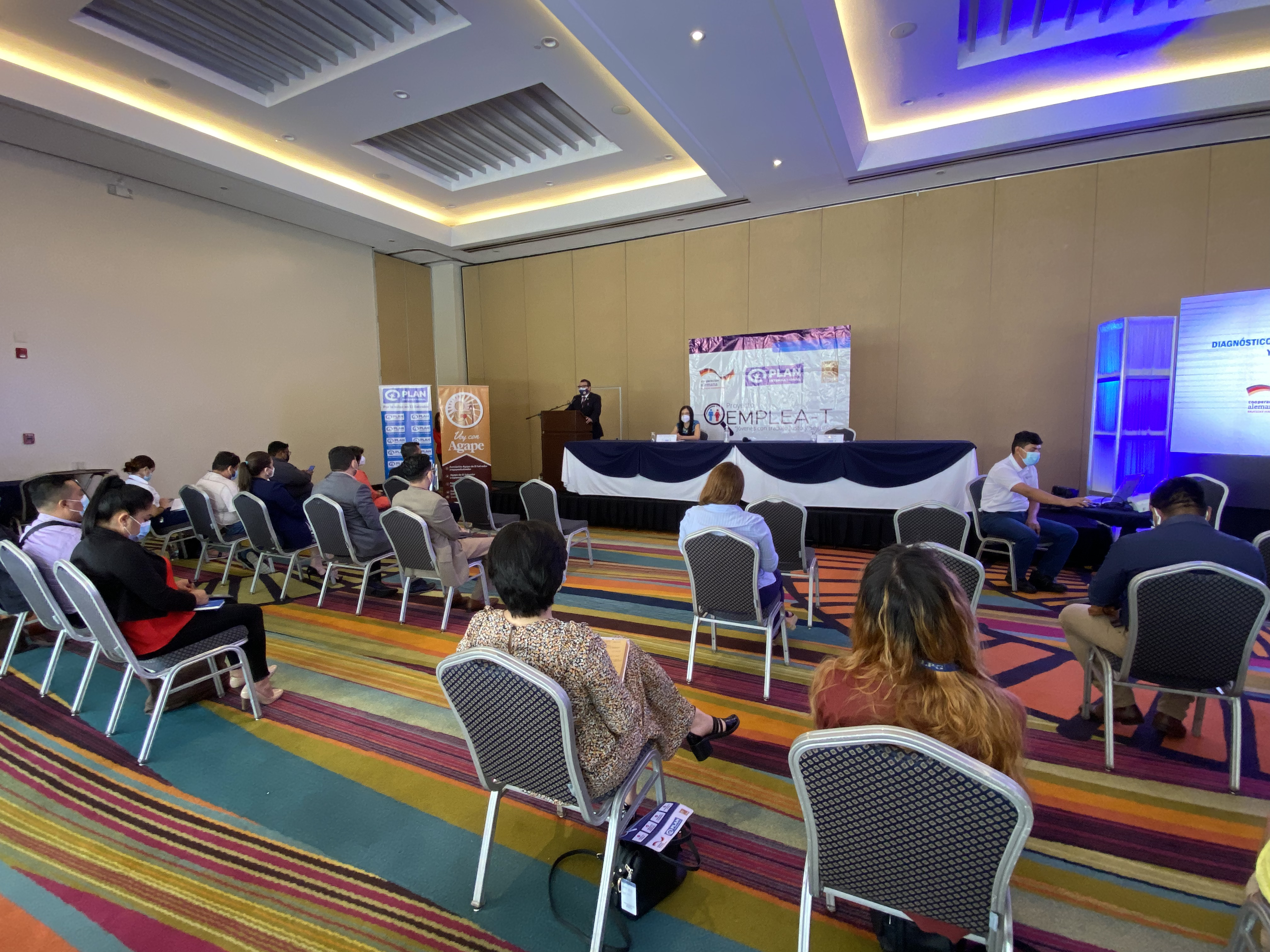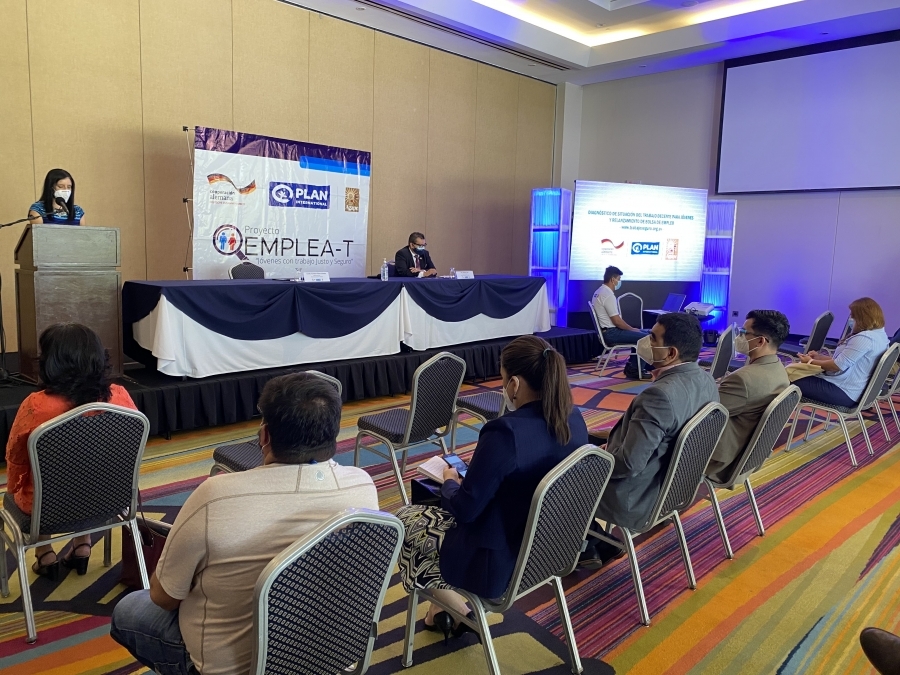Plan International and the Asociación Ágape de El Salvador presented the main findings of the "Diagnosis on the situation of decent work for young people in Guatemala, Peru and El Salvador, and proposals to promote it".

The initiative is part of the regional project Emplea-T: Fair and Secure Work for All, which began at the end of 2019 in a partnership between Plan International in El Salvador and the Asociación Ágape de El Salvador, and funding from the Ministerio Federal de Cooperación Económica y Desarrollo de Alemania (BMZ), with the intention of strengthening entrepreneurial youth in the region, especially young women with skills for employment and self-employment.
The diagnosis was carried out from january to april of this year with the participation of 371 young people from the region between 16 and 29 years of age and 33 representatives of job skills training institutions, private companies and state institutions.

In the three countries, women represent a higher proportion than men in indicators such as total population, Economically Active Population (EAP), Working Age Population (WAP), and PO. Thus, for example, 50.8% of the total population in Guatemala is female, 53% in El Salvador and 51.0% in Peru. Despite this higher proportion, the employed population is dominated by men, who have better employment opportunities and social security.
The working age population between 15 and 29 years old according to the Instituto Nacional de Estadística y Censos (DIGESTYC), PET between 15 and 29 years old, grew by 7% more in 2019 compared to 2016. This increase is lower than that shown by the national PET, which for the same period grew 13%. The youth PET in 2019 (5,132,396 youth; 52% female; 48% male), represents 41% of the national PET.
The Banco Central de Reserva (BCR) reported a few days ago that the salvadoran economy will grow around 9% in Gross Domestic Product (GDP) in 2021, that is, almost 3 percentage points more than estimated in June, being surpassed by Panama with 12%.
The GDP of the three countries in the period 2015-2019 was less than 5%, which meant low growth and a limited capacity to produce goods and services, and employment for the population in general and in particular for young people between 18 and 29 years old.

In the year 2020, with the appearance of COVID-19, the GDP has presented negative rates impacting significantly on the generation of new jobs and the closing of job sources.
Unemployment rates show that the female segment is the most affected. During the period analyzed, the average national unemployment rate was 4% in Guatemala, 7% in El Salvador, and 7% in Peru.
The population with social security (especially health), ranges from 30% to 35% of the employed population. The rest of the population is in the informal sector and their income level does not allow them to have access to this type of services.
The statistical data for the three countries are partial and present weaknesses such as the level of disaggregation by gender, age range, and are not updated. This situation has made it impossible to construct indicators to accurately measure the status of decent work.
 English
English  Español
Español 
